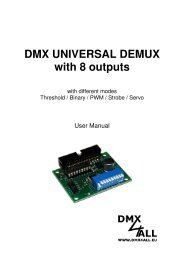USBASP Installation in Windows 10: For ATMEGA beginner user, installation of USB-ASP in Windows 10 can be tiresome. USBASP Device is inteded to work with 32 bits yet our current PC Windows 10 is mostly 64 bit. So extra steps are needed for a particular USB port. If you have installe.
-->This article helps to fix an issue in which Windows 10 doesn't install specific drivers for USB audio devices on the first connection.
Original product version: Windows 10, version 1703
Original KB number: 4021854

- What to do if the driver doesn't install. If you double-click the installation file and nothing happens, follow these steps: Select the Start button, then select Settings Devices Printers & scanners. On the right, under Related Settings, select Print server properties. On the Drivers tab, see if.
- All devices operating in MTP mode are supported. Note: The MTPdrive is not a replacement for the device's factory (or Windows default) device driver. You must be able to connect your device to the computer and have it visible in the Windows Explorer, before it.
Symptom
When you connect a USB audio device to a Windows 10 Version 1703-based computer the first time, the operating system detects the device but loads the standard USB audio 2.0 driver (usbaudio2.sys) instead of the specific device driver.
Cause
This issue occurs because the USB audio 2.0 driver (usbaudio2.sys) isn't classified as a generic driver in Windows 10 Version 1703. Therefore, the system assumes that a compatible, nongeneric driver is installed for the device even though the driver is generic.
This issue also causes Windows 10 Version 1703 to postpone the search for other compatible drivers through Windows Update that typically occurs immediately after you install a new device.
Resolution
To fix this issue, use one of the following methods.

Method 1
To resolve this issue, install update 4022716.
Method 2
If the device-specific driver is distributed through Windows Update, you can manually update the driver by using Device Manager. For more information about how to do this, see update drivers in Windows 10.
Method 3

If the device is not yet connected, first install the device-specific driver, such as by using the appropriate installer. After the device-specific driver is installed, Windows 10 will select that driver instead of the standard USB audio 2.0 driver when you first connect the device.
Note
See the device manufacturer's user guide for specific instructions about how to install the driver.
Method 4
If the driver isn't distributed through Windows Update, you can manually reinstall the driver. To do this, follow these steps:
- Install the device-specific driver (see Method 2).
- Open Device Manager.
- Right-click (or tap and hold) the name of the device, and then select Uninstall.
- Restart the computer.
Dmx4all Port Devices Driver Downloads

Dmx4all Port Devices Driver Download Win 7
When it restarts, Windows will try to reinstall the device by using the device-specific driver.
